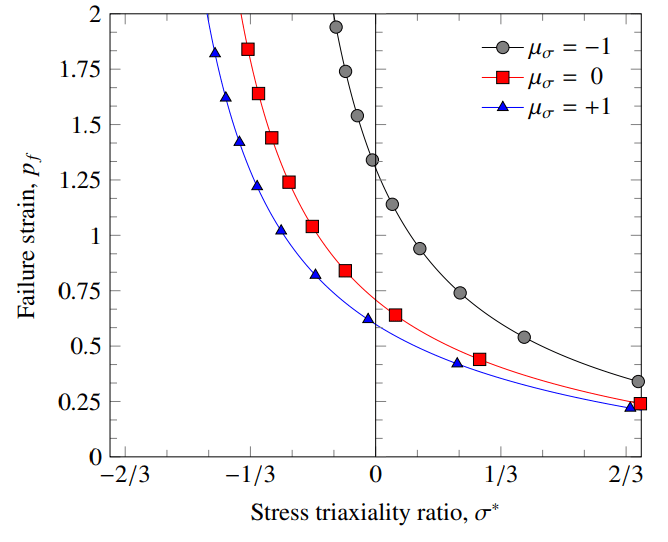Hello
I am writing because I have a question while reviewing local failure as follows.
I am reviewing local failure of the steel structure.
Design code : ASME Sec.8 Div.2 clause 5.3.3
Design Method : Elastic-Plastic Analysis
FEA Program : ANSYS
Material : Carbon Steel
I calculate 'Limiting triaxial strain, ɛ[sub]L[/sub]', as follows.
(ASME Sec.8 Div.2 Formula 5.6)

where,
Hydrostatic stress, (σ[sub]1[/sub]+σ[sub]2[/sub]+σ[sub]3[/sub])/3 = -150 MPa (from FEA) (A negative value is calculated because it is a compressed part)
Equivalent stress, σ[sub]e[/sub] = 250 MPa (from FEA)
α[sub]sl[/sub] = 2.2 (from ASME Sec.8 Div.2 Table 5.7)
ɛ[sub]Lu[/sub] = m[sub]2[/sub] = 0.27 (from ASME Sec.8 Div.2 Table 5.7)
Limiting triaxial strain, ɛ[sub]L[/sub] = 1.36
Here are the questions.
1. In general, the elongation of carbon steel is about 0.2 (20%), but the calculated 'Limiting triaxial strain' seems to be too large compared to this. I wonder if it was calculated well.
2. If 'Limiting triaxial strain' is well obtained, I do not know how such a large value is possible. Please let me know what material to study.
I am writing because I have a question while reviewing local failure as follows.
I am reviewing local failure of the steel structure.
Design code : ASME Sec.8 Div.2 clause 5.3.3
Design Method : Elastic-Plastic Analysis
FEA Program : ANSYS
Material : Carbon Steel
I calculate 'Limiting triaxial strain, ɛ[sub]L[/sub]', as follows.
(ASME Sec.8 Div.2 Formula 5.6)

where,
Hydrostatic stress, (σ[sub]1[/sub]+σ[sub]2[/sub]+σ[sub]3[/sub])/3 = -150 MPa (from FEA) (A negative value is calculated because it is a compressed part)
Equivalent stress, σ[sub]e[/sub] = 250 MPa (from FEA)
α[sub]sl[/sub] = 2.2 (from ASME Sec.8 Div.2 Table 5.7)
ɛ[sub]Lu[/sub] = m[sub]2[/sub] = 0.27 (from ASME Sec.8 Div.2 Table 5.7)
Limiting triaxial strain, ɛ[sub]L[/sub] = 1.36
Here are the questions.
1. In general, the elongation of carbon steel is about 0.2 (20%), but the calculated 'Limiting triaxial strain' seems to be too large compared to this. I wonder if it was calculated well.
2. If 'Limiting triaxial strain' is well obtained, I do not know how such a large value is possible. Please let me know what material to study.

